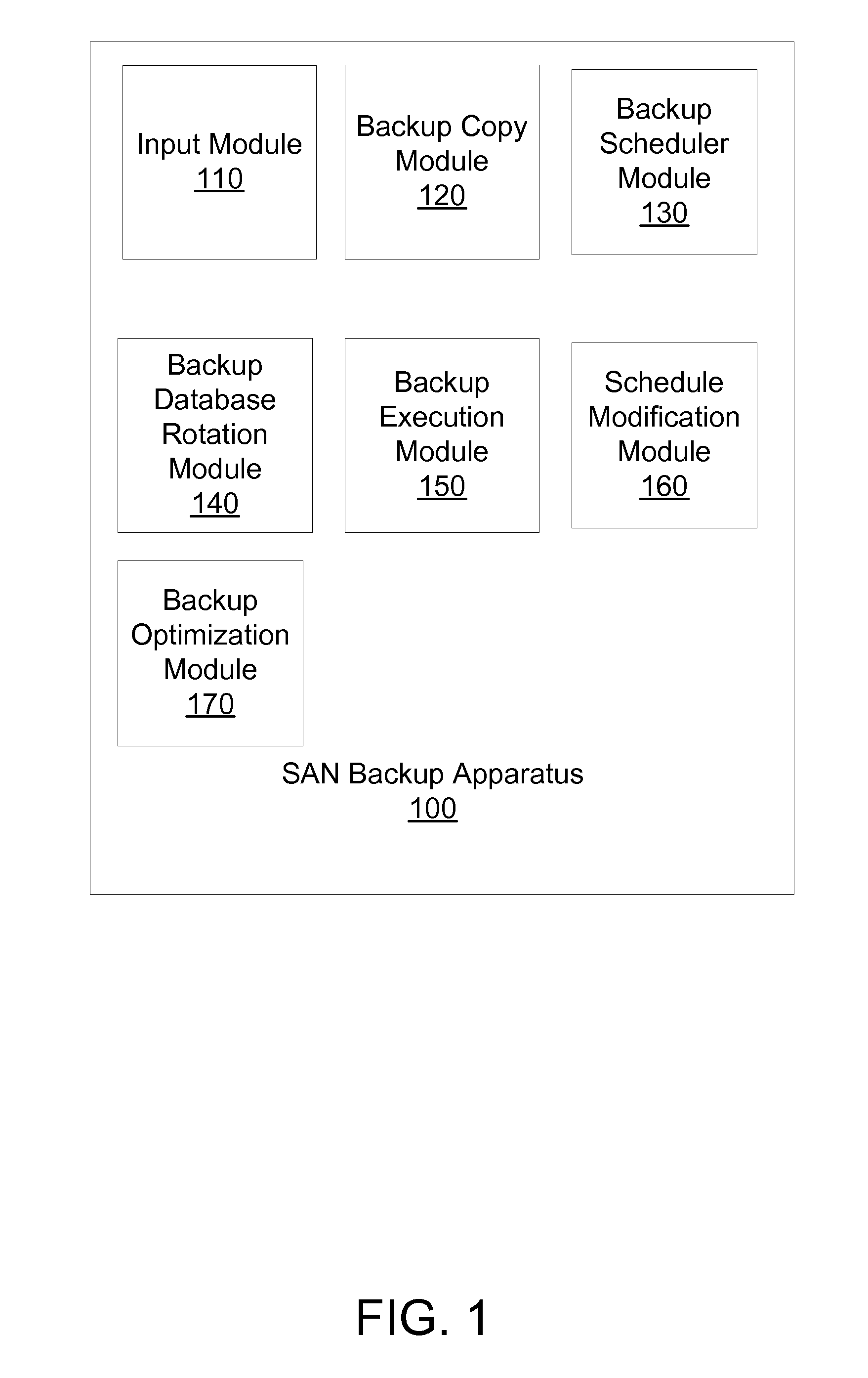Apparatus, system, and method for creating a backup schedule in a san environment based on a recovery plan
a backup schedule and recovery plan technology, applied in the field of san database technology, can solve the problems of database inability to use logs to roll backwards, inability to create a backup schedule, and long rto
- Summary
- Abstract
- Description
- Claims
- Application Information
AI Technical Summary
Benefits of technology
Problems solved by technology
Method used
Image
Examples
case 2
[0052]Case 2 shows the backup volumes after a 6.22 hour backup interval passes. Assuming that a threshold amount of data activity has occurred such that the backup optimization module 170 has not sent a message to skip the backup, a backup occurs and database copy D is rotated such that it is used to hold the current backup copy. Databases copies A through C, each assigned to provide a recovery assurance period, age 6.22 hours. Each database copy A through C can still guarantee recovery of data at the recovery assurance points by use of the database logs. A database administrator can roll forward a database to a desired point; however, the farther the point is in time from the current age of the database, the greater the time required because logs are read sequentially.
[0053]If, at case 2, recovery of data from two days ago were necessary, both database copy A and copy B could provide the information by use of the database logs. However, because database copy B is closer to the desi...
case 3
[0054]Case 3 represents the passage of 31.1 hours from the scenario presented in case 2. Database copies A and B each age an additional 31.1 hours, with A continuing in its assignment to the 7 day recovery assurance point and B continuing in its assignment to the 2.33 day recovery assurance point. The backup rotation module 140 flags database copy F to guarantee the 18.67 hour assurance point, and also flags database copy C as free for use. As such, database copy C is used for the current backup interval.
case 4
[0055]Case 4 represents the passage of an additional 3.12 days from case 3. Database copy B reaches an age of seven days and provides assurance for the maximal guaranteed recovery period of seven days. The backup database rotation module 140 flags database copy A as free space. Database copy A may then be used to meet the backup interval requirements. At this point in time, database C is approximately 2.33 days old, and database F is flagged to cover the assurance period of 18.67 hours. The rotation of databases to meet the backup interval requirements and the recovery assurance period requirements then continues as described above in connection with FIG. 2A.
[0056]Revisiting case 1, if during the 6.22 hour backup interval minimal database activity occurred, the backup optimization module 170 instructs the backup execution module 150 to skip the backup. In addition, the database copies are treated as if they had not aged by 6.22 hours, and the graphical representation of the database...
PUM
 Login to View More
Login to View More Abstract
Description
Claims
Application Information
 Login to View More
Login to View More - R&D
- Intellectual Property
- Life Sciences
- Materials
- Tech Scout
- Unparalleled Data Quality
- Higher Quality Content
- 60% Fewer Hallucinations
Browse by: Latest US Patents, China's latest patents, Technical Efficacy Thesaurus, Application Domain, Technology Topic, Popular Technical Reports.
© 2025 PatSnap. All rights reserved.Legal|Privacy policy|Modern Slavery Act Transparency Statement|Sitemap|About US| Contact US: help@patsnap.com



